G’day Goonhammer readers! It’s that time of year, the silly season, when the Clash of Kings updates are released. Whole new army lists will emerge over the next few months, and not without reason; this is the biggest update to hit since the famed “no-nerf Clash” of 2022. The scope of this Clash of Kings is to bring underused units to the forefront, and foster certain playstyles in armies that previously avoided them. This is most evident in the broad changes applied to Standards, Spellcasters and Spears. A special thanks to Mantic Games for giving us access to the new book.
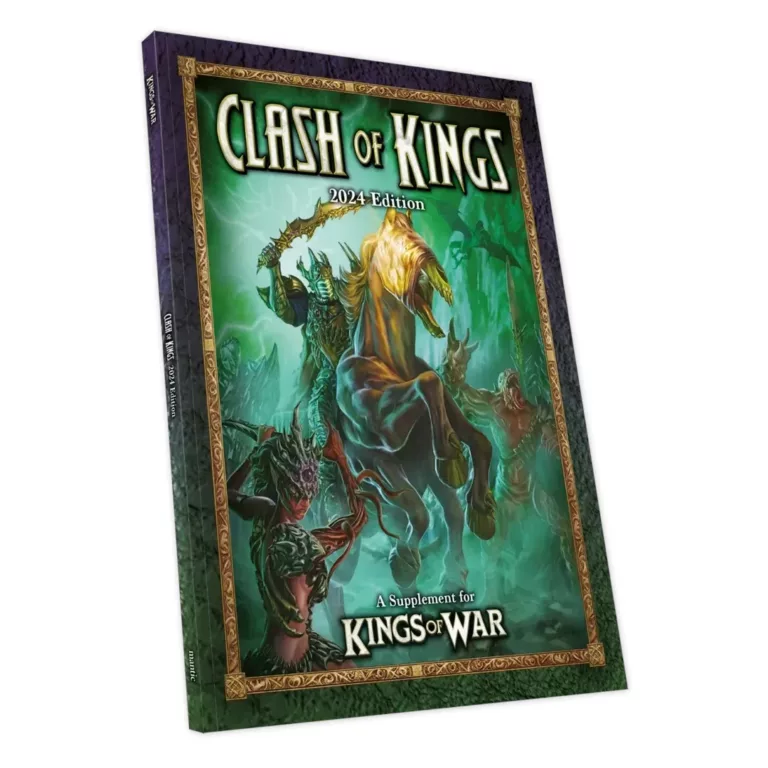
The Standard Approach
Standards, also known as standard bearers, are the ubiquitous flag-bearing hero unit. They exist to provide the cheapest source of Inspiring, and can be essential to holding other units together.
Prior to 2022, units that possessed Inspiring were in short supply. Many armies had hero units, but most had “conditional Inspiring”, which was restricted to certain units. For example, the Thuul Aquamage had Inspiring – Waterbound only, which inspired only Water Elemental type units. In these conditions, the standard bearer heroes were invaluable; capable of Inspiring all units and for a cheap price. With a Lute of Insatiable Darkness for some Bane Chant, the standard bearer was a helpful addition.
This changed overnight when the Clash of Kings 2022 update had all “conditional Inspiring” replaced with Inspiring. Suddenly all those heroes, like the Thuul Aquamage and the Seductress, were free to Inspire everything! But alas, the standard bearer was no longer essential. They were still the cheapest hero with Inspiring, but came up short compared to characters that had innate combat and spellcasting abilities.
Inspiring Change
The time for the lowly standard bearer has come once again. The first major change is that every one of these types of units has gained Very Inspiring, which is Inspiring but with a range of 9” rather than 6”. This simply lets these units do what they do, but better. In some armies that have very little access to Very Inspiring, this already makes standard bearers worth taking.
The second major change, and perhaps the most exciting, is that nearly all of these standard bearer units have received an Aura. These Auras typically affect only a subset of units defined by a single keyword or type, often units that needed a certain something to compete with the popular choices.
Skip in their Stride
In many armies the infantry (and heavy infantry) are often overlooked, taken purely for their unlocking potential and for the scenario. This isn’t necessarily bad, it is a major function that infantry should serve, but what if they could charge a little better? The infantry of Goblins, Empire of Dust and Halflings (Ravenous only) are, for the most part, just stuff to get in the way, but now with a Strider aura from the army standard bearer (or equivalent), they will at least get to hit at their standard melee value and do at least a middling amount of damage!

The real winners in this deal are the elite infantry units in each of the armies; the Mummies, Revenants, Luggits and Stalwarts. These are all very decent units but suffer from being Melee 4+. This in itself is not awful, but when Hindered these units lose effectiveness dramatically. Strider just helps these units be a bit more consistent on the battlefield.
Walk on the Wild Side
To make up for the relatively slow speed of infantry in Salamanders and Undead, the standard bearers gain Aura (Wild Charge).
For Salamander this is a flat Wild Charge (2) for heavy infantry, so it won’t add to any existing Wild Charge such as with Unblooded. What this does do is put Ceremonial Guard and Primes at the same charging distance as Ogres and Elves, meaning Salamanders won’t always be on the receiving end when it comes to charges. This also helps The Whispering Scales formation, which is already speedy thanks to Pathfinder.
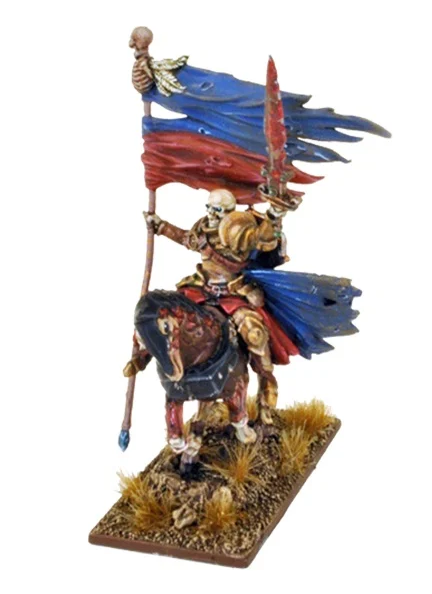
The Undead Army Standard Bearer gains Aura (Wild Charge (D3)) for Skeletons only. This keyword is not only found on standard Skeletons, but also on anything with Revenant in its name. Revenant infantry can threaten units with Speed 6 or below. Revenant Cavalry could potentially outpace Elven cavalry. Most excitingly, the Undead Great Flying Wyrm could threaten a massive 23”! Of course, for nearly all these situations the Standard Bearer will need to be mounted, but it’s (probably) worth it.
True Elitism
Only two armies receive one of the best special rules to have in an aura; Elite. The Infernox of the Abyssal Dwarfs and Ratkin Swarm-Crier will have Aura (Elite (Melee)) for infantry and Tek respectively. A powerful aura but quite limited in effect.
For the Abyssal Dwarfs, this is essentially getting the Infernox from the Damned of Yaygar formation without having to buy the whole formation. The Abyssal Berserkers will benefit from this aura the most, having the highest volume of Melee 3+ attacks and Vicious, they will be re-rolling a lot!
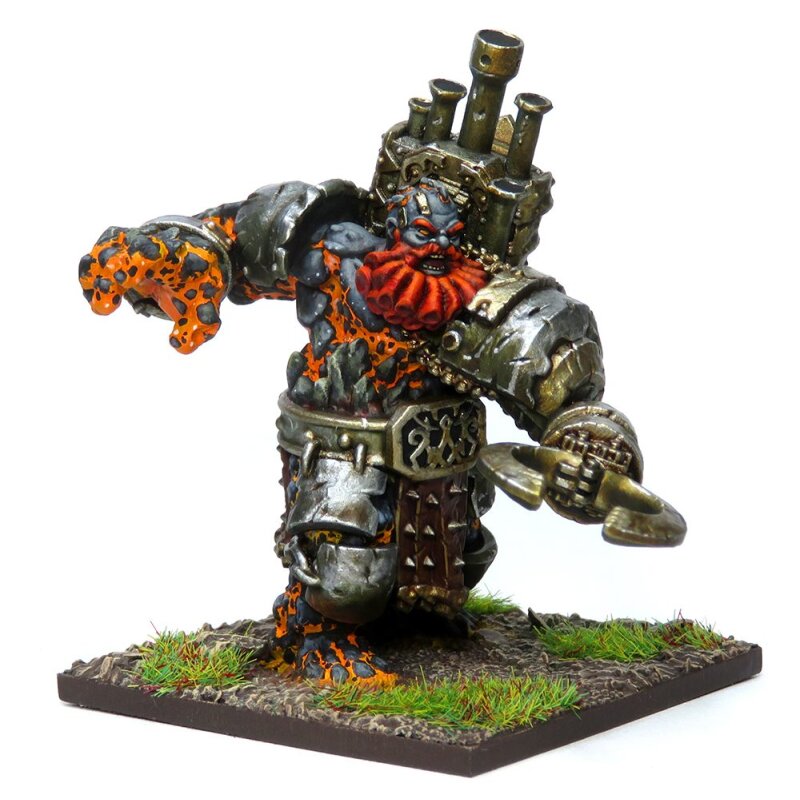
In the Ratkin, the Tek units are some of the nastiest available, including Nightmares, Tunnel Runners and Death Engine Impalers. Getting Elite on these would only increase their viability, and help Ratkin players do more than just spam Shock Troops (which is still good).
On the Rampage
It’s definitely a theme that infantry are being improved, but in some cases, infantry are getting better at killing other infantry with standard bearer auras of Rampage. Granting extra attacks against infantry, heavy infantry, cavalry and swarms, Rampage is typically dolled out as a variable amount (e.g. D3, D6). For Elves and Forces of the Abyss, the aura will be a flat Rampage 3. In Orcs and Riftforged Orcs, the Flagger will bestow Rampage (n), a number equal to the total heavy infantry units within 6”, a very classic orc mechanic.
The Elves’ Rampage aura is restricted to Warhost units, a new keyword found on nearly all Kindred units except Gladestalkers. War Chariots and Palace Guard also have the Warhost keyword, and which will benefit the most from extra attacks.
Of all the Forces of the Abyss infantry that would enjoy Rampage 3, Succubi and Abyssal Guard are the best targets. Succubi have enjoyed some popularity in lists over the years, while Abyssal Guard have languished in the discard pile of forgotten units. This will at least make them worth trying again, especially as co-author Cytoplasm has three regiments.
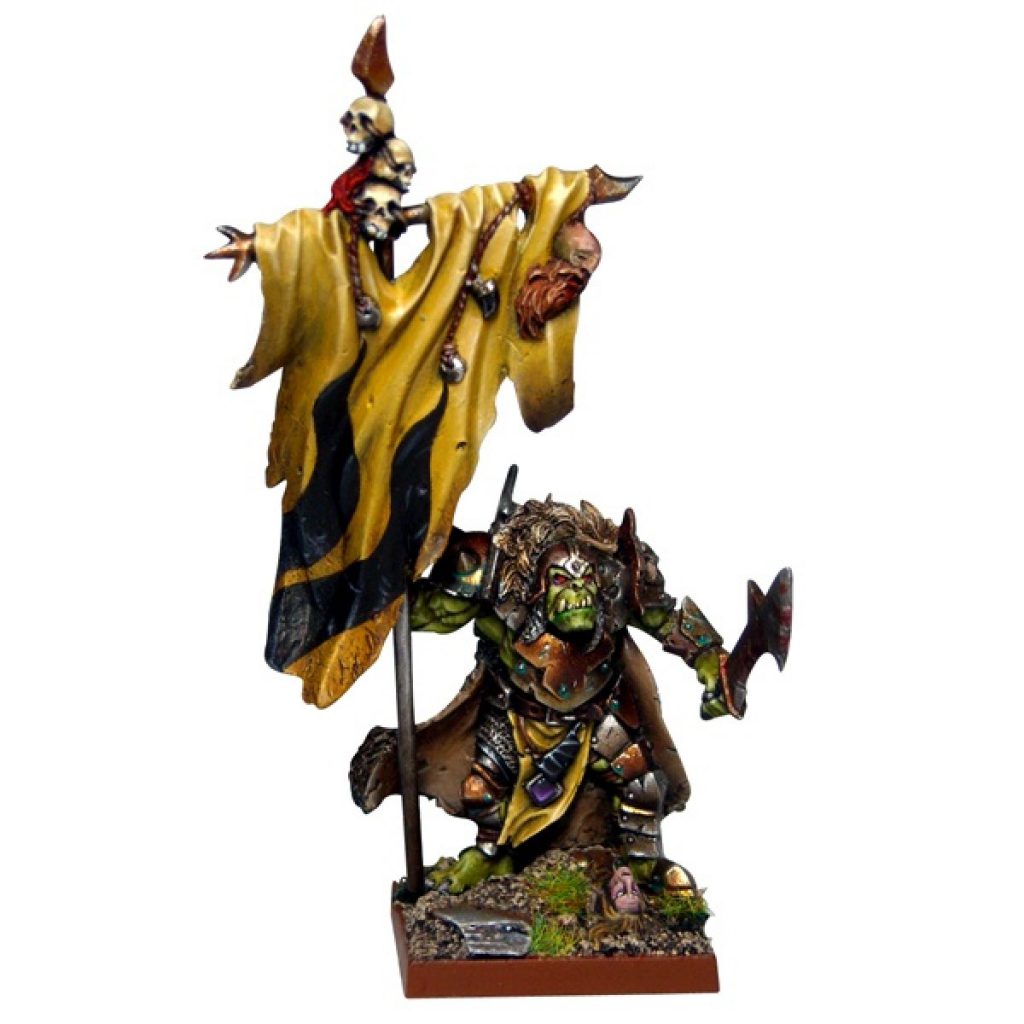
The most exciting Rampage aura is that of the Orcs. The Orcs love clumping together, and nearly every heavy infantry unit in Orcs and Riftforged Orcs would be worthy of extra attacks. The Riftforgers look to be the ultimate winner, increasing their already considerable damage output yet further.
Feeling Thirsty
“If you can’t beat them, join them” is perhaps what’s happening with the introduction of Lifeleech (+1) auras to standard bearers of Order of the Brothermark, Kingdoms of Men and League of Rhordia infantry. Of all the armies, the Kingdoms of Men and League of Rhordia have a vast diversity of infantry units, so Lifeleech will help them stick around a little longer. The aura is not worth building around compared to some others, however if the army happens to be infantry heavy, then might as well have a standard bearer with the Lute of Insatiable Darkness.
What’s most critical is how these banners are helping humans leech life from their enemies. Is evil developing among the humans of Pannithor, with vampirism coursing through the kingdoms? Or does the enchanted banner call upon dark magics in order to help humanity fight against the encroaching evil?
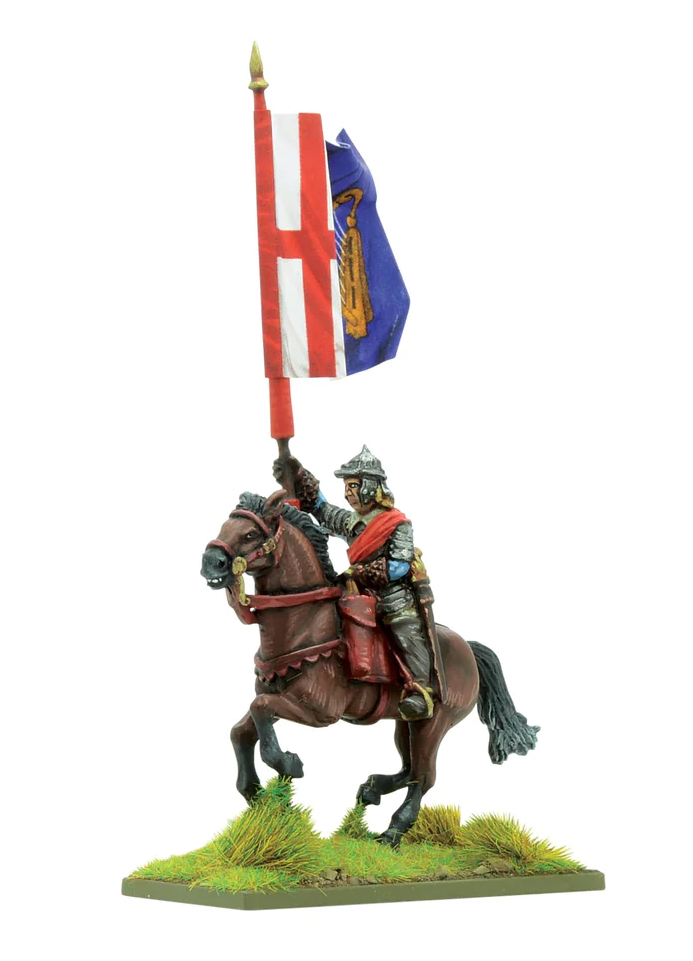
Anger Management Issues
Waver mitigation, the art of preventing a unit from being Wavered, is an ever important consideration (unless you’re Undead or Empire of Dust). The Dwarfs have Headstrong to ignore being Wavered, and now the standard bearer has an aura that grants re-rolls to failed Headstrong tests. This was formerly an upgrade to the Dwarf Lord, who gets something fun to replace it.
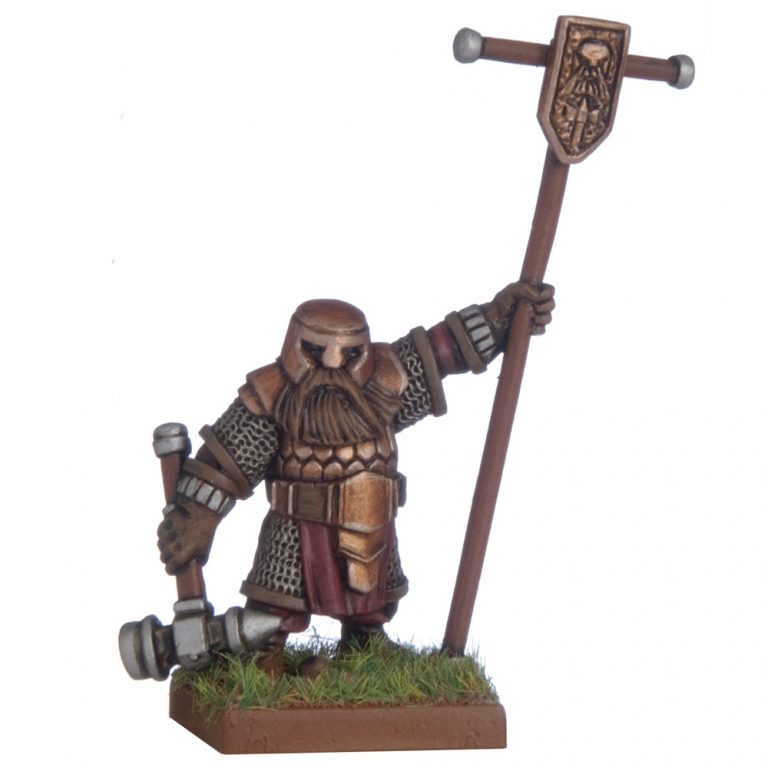
Under the sea, the optional upgrade Horn of Ocean’s Fury for the Naiad Envoy is now free and part of the unit’s profile. A built-in Fury aura for Infantry and Heavy Infantry will best be enjoyed on Thuul.
In counter to this and other waver mitigation, the Exemplar Adjutant of the Order of the Green Lady has something that actually isn’t an aura: Entangling Roots. This standard bearer equivalent can temporarily strip Fury and Headstrong from an enemy unit within 18”. Considering nearly every army has such special rules somewhere in the list, it will always come in handy.
Bolstering Morale
At the end of the day, having units not die is one of the most important things in Kings of War. Higher Nerve is key to this, but Rallying is the only means to improve it. Improving the Nerve of nearby units by a set amount, Rallying is now on Free Dwarf Standard Bearers and Ogre Paymasters.
In Free Dwarfs, the Rallying is restricted to Dwarfs, but it does help mitigate the generally lower Defense among Free Dwarf infantry. Bumping up the nerve of Ironclad and Shieldbreaker hordes is an obvious choice. One can dream of pushing Berserker Brock Riders to -/19, however this requires the poor standard bearer to keep up with them. This might still be useful for that first turn, however, to survive any first turn shooting.
The Ogre Paymaster is a completely new unit, using the fantastic model from Kings of War Vanguard. The Paymaster lacks Inspiring, but the Rallying – Merc only is invaluable to a whole swathe of Ogre units; everything except chariots and Siegebreakers. For these units at the horde level, this means going from 15/17 to 16/18, which everyone can agree just feels that much better.
The Basileans get something wholly unique to help remove damage over the course of the game; the Bearer of the Holy Icon can hand out Aegis Fragments to nearby human units. This item grants Iron Resolve (+1), which can only be used once, removing damage when passing a Nerve test. Being able to give these out where needed across a game is very useful, potentially removing the need to purchase Aegis Fragments at all, and instead leave it to the Bearer.
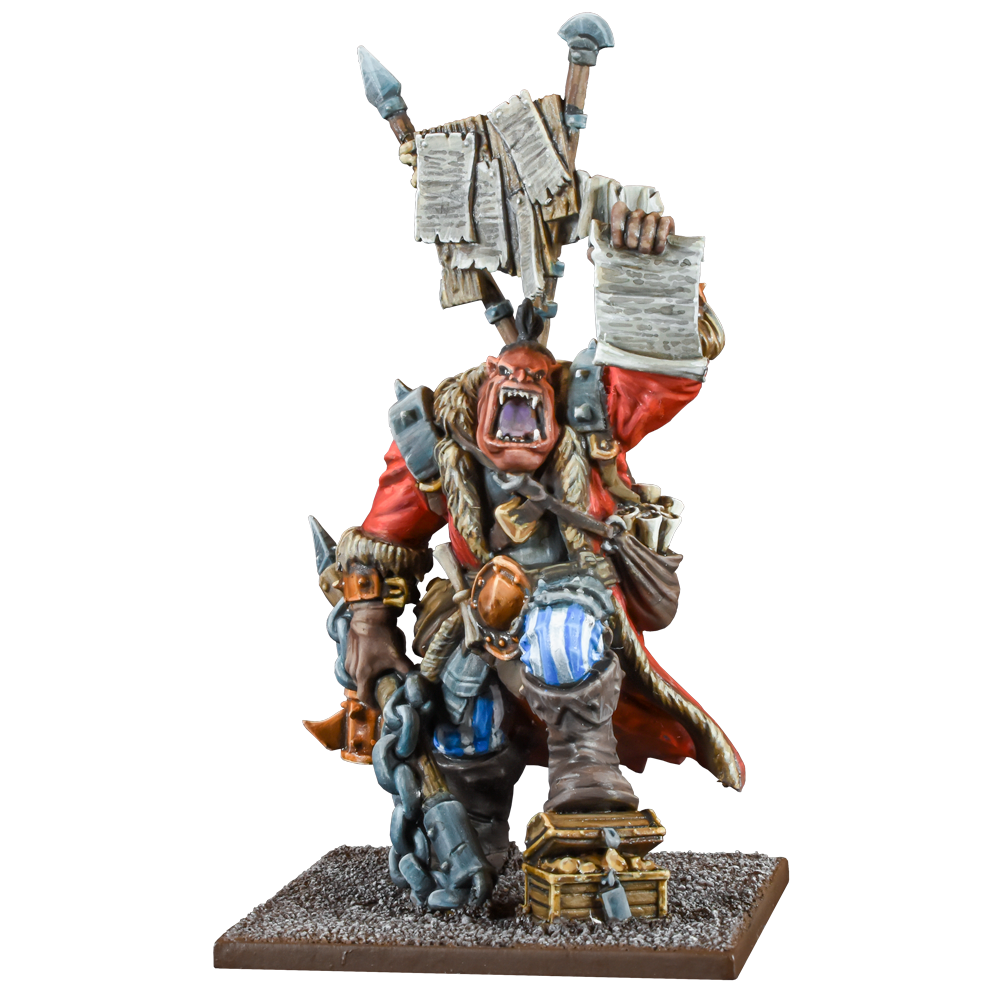
Too Cool
Defying all of our loose categories, the Northern Alliance have all the chill in their special standard bearer unit; the Clarion. Being the Herald of the North, the Clarion can hit a nearby enemy unit with Frozen. Considering the newfound synergy that Frozen has within the Northern Alliance list, this just helps get some more out to where it’s needed. That’s if somehow the enemy isn’t already an ice block thanks to the efforts of Ice Kin Hunters, Frost Giants, Ice Elementals, Ice-Queens and Frostclaw Raiders. Please, Northern Alliance players, get some Frozen tokens.
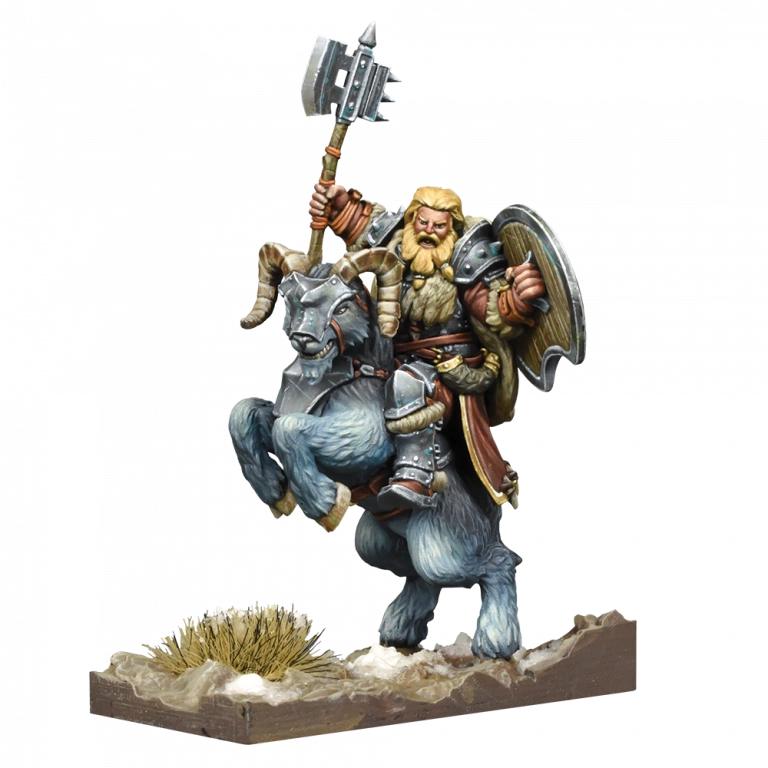
À La Carte Spellcasters
No longer is the ability to fully customise your spell caster the sole purview of the Elven Archmages. Now (almost) all spellcasters, from the lowly Wiz to the mighty Liche King can be customised to suit the role that you want them to perform. Now, there are still a few exceptions. Unique characters are still unchangeable, and some of the casters named after their spell still have it as standard, such as the Dwarf Flame Priest, or the Abyssal Dwarf Hexcaster, who still come with Fireball and Hex respectively.
This is a great update for customising “your wizard”, as well as a nice balance change. No longer is the Thuul Aquamage purely outclassed by the Thuul Mythican, stuck with Icy Breath, a situational-at-best spell, or Surge, in a list that may not have a need for it. Now you get to pick if you want that nice Weakness without paying the extra points for a spell you don’t want to be casting.
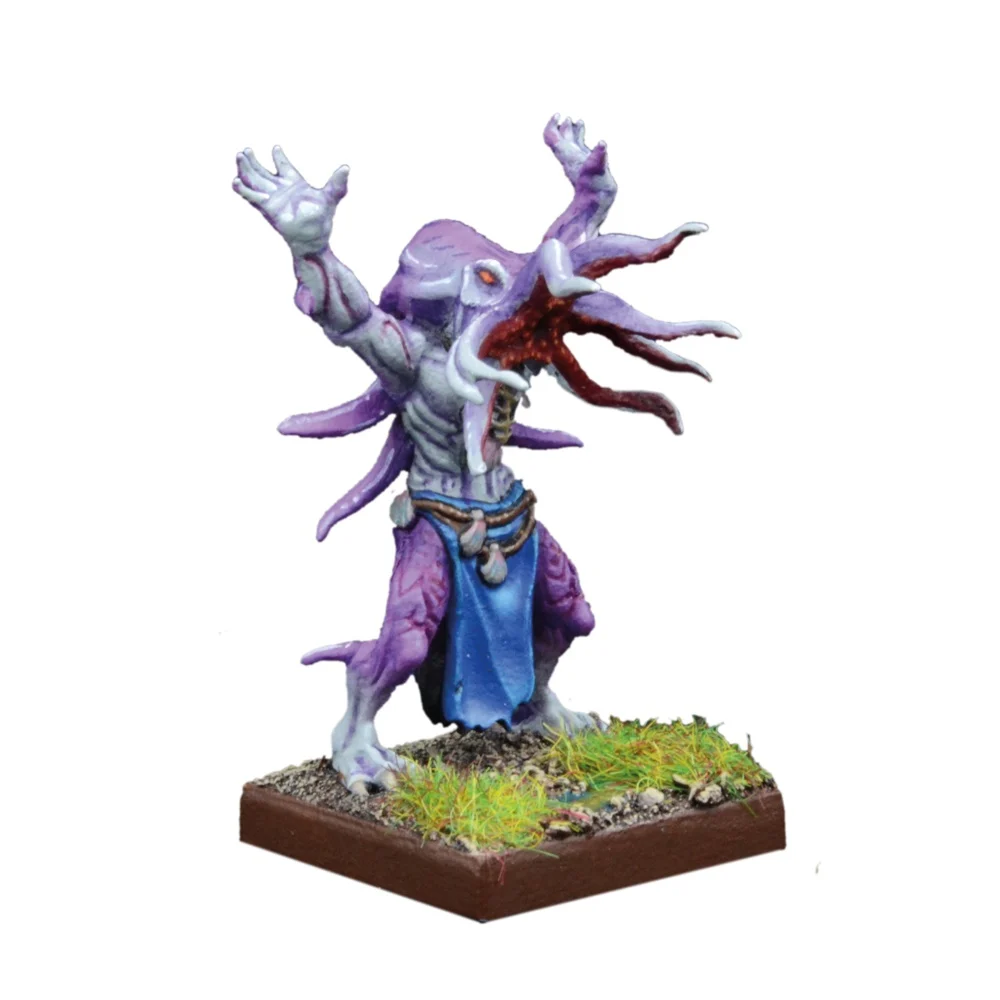
Some lamented that these changes might make the most popular spellcaster “Wizard on horse with Alchemist’s Curse and the Boots of Levitation” cheaper. Alchemist Curse has received a points increase, while the Boots have been restricted to Infantry and Heavy Infantry only, so the package will still be moderately expensive, depending on your base caster, and it won’t be as easy to evade units like a mounted individual could.
The Point of Phalanx
One of the primary defences that infantry had against faster units was Phalanx; the idea that pointing long, sharp sticks at the enemy discourages them somewhat. The special rule removes Thunderous Charge, and imposes a -1 to hit on certain units like Cavalry and those with Flying. In addition, units with Phalanx would have more attacks than a standard infantry unit, as more individuals in the unit get a chance to stab. Some units even get one higher Unit Strength. Overall, however, Phalanx is situational, affecting only some units in Kings of War.
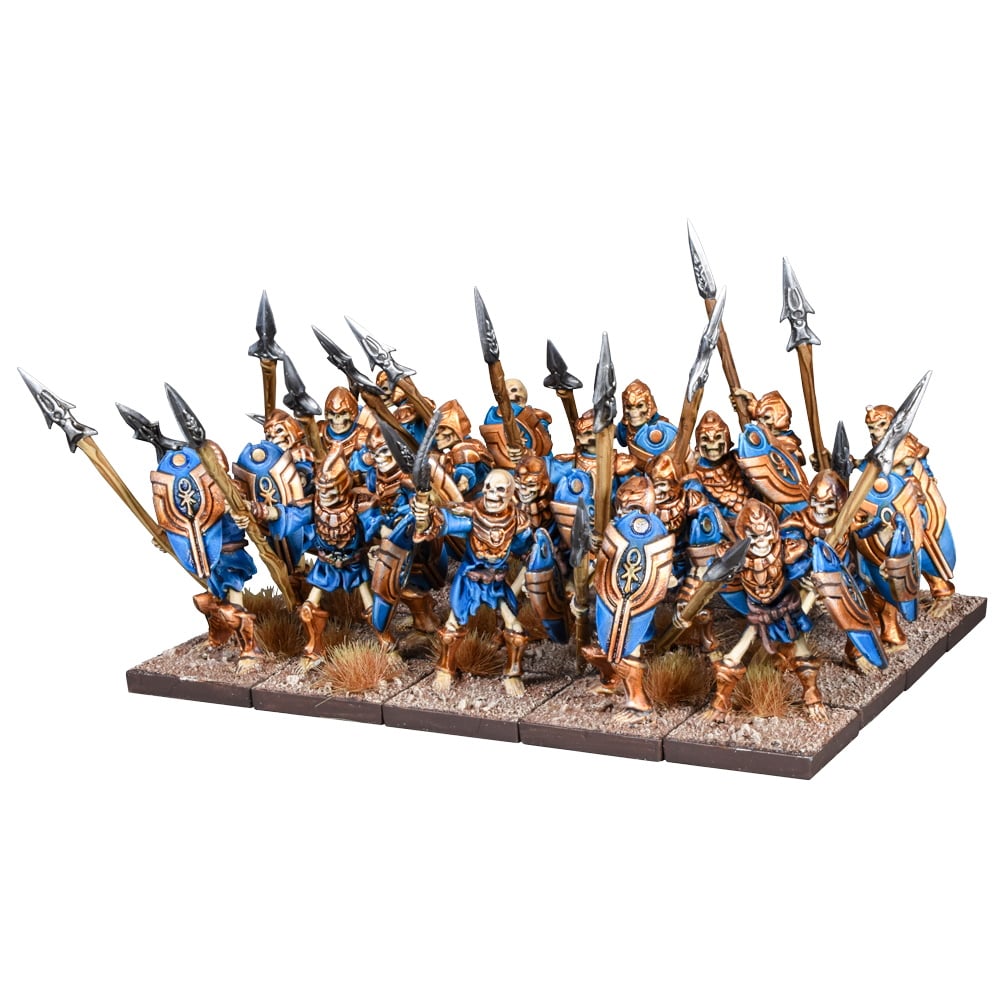
It is obvious that Clash of Kings is all about subtly improving infantry. For those with Phalanx, which are quite a bit more expensive than any non-Phalanx counterparts, they have received a global points decrease. A Goblin Sharpstick horde, for example, is going from 155 to 140 points, paying only 15 points more than the Rabble horde for Phalanx. This is definitely more enticing, and with points leftover during army list creation, upgrading a unit to its Phalanx version could definitely be viable.
Get stuck in!
This is but a taste of what’s on offer in the new Clash of Kings. There is a lot in this book, more for some armies than others, but it sets up the game for a good year in 2024. If that wasn’t enough to convince you, it also contains the Twilight Kin army list and background, as well as some new scenarios to freshen up the games. It’s definitely a book worth getting, and if you have your Mantic Companion subscription the army lists should already be updated.
For now, the cadence of updates seems about right; a Clash of Kings each year for all armies, and then two to three armies a year get some major refresh (or are completely new!). For some this might be too much too quickly, but we here at Goonhammer, having come from the unrelenting releases of Warhammer 40,000, are perfectly happy with how Kings of War is panning out.
Have any questions or feedback? Drop us a note in the comments below or email us at contact@goonhammer.com.


